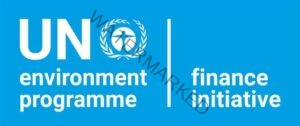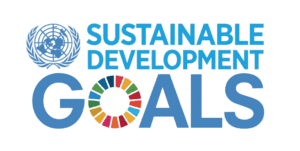Gender Equality Challenge
Women's Fight for Gender Equality
- Home
- Human Rights
- Gender Equality Challenge (SDG 5)
United Nations' Sustainable Development Goals (SDGs)
Gender Equality Challenge (SDG 5)
Gender equality is not just a fundamental human right but a necessary foundation for a peaceful, prosperous, and sustainable world. Achieving gender equality is enshrined in Sustainable Development Goal (SDG) 5, part of the 2030 Agenda for Sustainable Development set by the United Nations. It states that a world without gender bias is a world where everyone can thrive. However, the road to achieving gender equality remains riddled with challenges, from gender wage and income inequality to persistent gender discrimination in the workplace and society at large.
Gender equality is a fundamental human right and a crucial component of a just and sustainable society. It is recognized as the 5th Sustainable Development Goal (SDG 5) within the United Nations Sustainable Development Goals (SDGs) framework, aiming to “achieve gender equality and empower all women and girls” by 2030. Despite notable progress in recent years, gender inequality persists in many areas, particularly in economic and workplace environments. This article explores the gender equality challenge, emphasizing key aspects like gender wage inequality, gender discrimination, and the need for gender sensitivity to achieve true parity in various spheres of life.
What is Gender Equality and Why Does it Matter?
Gender equality refers to the equal rights, responsibilities, and opportunities of all individuals, regardless of their gender. It is about leveling the playing field so that women and men can equally participate in society, whether in the workplace, in leadership, or at home. Achieving gender equality is critical not only as a matter of fairness but also for global economic growth and sustainable development. According to the Gender Equality Index, which measures the progress of countries in closing the gender gap, nations with high levels of gender equality experience higher rates of innovation, productivity, and GDP growth.
Understanding SDG 5: Achieving Gender Equality
SDG 5 emphasizes eliminating all forms of discrimination, violence, and harmful practices against women and girls while ensuring equal opportunities for leadership at all levels. It also calls for reforms that promote shared responsibilities in unpaid care work, access to reproductive health services, and equal rights to resources, including land and economic assets. Gender equality is not only a goal in itself but also a crucial factor in achieving other sustainable development goals.
The UN 2030 Agenda recognizes gender equality as a catalyst for improving economic growth, poverty reduction, and social progress. Without gender parity, sustainable development cannot be achieved. Unfortunately, the gap remains wide, especially in areas such as labor markets, leadership roles, and income levels.
The United Nations Sustainable Development Goal 5 (SDG 5) aims to eliminate all forms of discrimination, violence, and harmful practices against women and girls. It also seeks to ensure equal participation in leadership and decision-making, access to education, and equal opportunities in the workforce. The UN 2030 Agenda clearly emphasizes the need to empower women and girls as key contributors to sustainable development. Achieving gender equality is not just about fairness but about ensuring a more prosperous, sustainable world for everyone.
Key Targets of SDG 5:
- End all forms of violence against women and girls.
- Eliminate harmful practices like child marriage and female genital mutilation.
- Recognize and value unpaid care and domestic work.
- Ensure full participation of women in leadership positions.
- Ensure universal access to sexual and reproductive health services.
Gender Wage and Income Inequality: A Persistent Issue
One of the most visible forms of gender inequality is gender wage inequality—the difference in earnings between men and women for the same or equivalent work. Globally, women earn less than men in almost every sector, even in countries with robust equality policies. This disparity is further reflected in gender income inequality, which encompasses the broader range of economic disadvantages women face, including limited access to resources, financial services, and entrepreneurship opportunities.
Efforts to close the wage gap have been slow. Even in high-income countries, progress is uneven. Factors contributing to women’s inequality in the workplace include occupational segregation, where women are concentrated in lower-paying jobs, and the undervaluation of work typically performed by women, such as caregiving. Moreover, women often face barriers in accessing leadership positions, contributing to a gendered power imbalance in many industries.
Gender Inequality in the Workplace
Gender inequality at work is a pervasive issue that affects not only women’s economic independence but also their overall well-being. Women are underrepresented in senior leadership roles, management positions, and decision-making processes across industries. Even in sectors where women dominate numerically, men are more likely to hold higher-paid positions of authority.
Additionally, workplace cultures often fail to accommodate women’s needs, particularly when it comes to work-life balance and family responsibilities. Maternity leave policies and flexible work arrangements are critical to supporting women’s participation in the labor market. Without gender-sensitive policies, women are disproportionately forced to choose between career advancement and family life, perpetuating the cycle of inequality.
Gender discrimination in the workplace takes many forms, from subtle biases in hiring and promotions to overt harassment. These issues contribute to women’s inequality and create environments where their contributions are undervalued and their careers stagnate.
Measuring Progress: The Gender Equality Index
The Gender Equality Index is a critical tool for measuring the progress of countries toward achieving gender parity. This index assesses various dimensions of equality, such as work, money, knowledge, time, power, and health. By tracking these indicators, governments and organizations can evaluate where improvements are needed and identify areas where progress has been made.
Despite international efforts, no country has yet achieved full gender equality. The annual celebrations of Women’s Equality Day and Women’s Day serve as reminders of both the progress made and the long road ahead. These occasions not only highlight the importance of women’s equality but also foster conversations about the persistent challenges and the need for continued advocacy.
Celebrating Milestones: Women’s Equality Day & International Women’s Day
Days like Women’s Equality Day and International Women’s Day provide an opportunity to celebrate progress toward gender equality while also reflecting on the work still to be done. These global observances highlight the struggles women have faced throughout history, from securing the right to vote to achieving economic independence, while serving as a rallying cry for further action. They also underscore the importance of SDG 5 in ensuring that future generations inherit a world where gender bias no longer limits potential.
Gender Sensitivity and the Path Forward
Achieving gender and equality requires a shift in societal norms and a stronger emphasis on gender sensitivity. This means challenging the ingrained biases that shape our perceptions of men and women, both in the workplace and at home. Gender discrimination often starts early, with girls discouraged from pursuing STEM fields or boys pressured to adhere to outdated notions of masculinity. To eliminate gender inequality at work, it’s crucial to foster environments where both men and women can thrive without fear of prejudice. Gender sensitivity in education, media, workplaces, and households is essential for breaking down stereotypes and fostering mutual respect.
The journey toward female equality and gender parity is intertwined with the broader goals of the SDG Goals. Sustainable development cannot be realized without addressing the economic, social, and political inequalities faced by women worldwide. Tackling these issues requires concerted efforts from governments, civil society, and the private sector.
Challenges and Solutions
Several challenges hinder the achievement of SDG 5:
-
Cultural and Social Norms: Deep-rooted patriarchal values and gender stereotypes continue to limit women’s roles and opportunities in many societies.
-
Gender-Based Violence: Women and girls are disproportionately affected by domestic violence, sexual harassment, and human trafficking, which not only harms individuals but also weakens communities and economies.
-
Political Underrepresentation: Women remain underrepresented in political offices and decision-making bodies, preventing gender-balanced policies and governance.
To address these challenges, we need comprehensive approaches that include:
-
Legal Reforms: Governments must implement and enforce laws that guarantee equal pay, protect against gender-based violence, and promote women’s participation in leadership.
-
Economic Empowerment: Providing women with equal access to education, financial services, and property rights is essential for closing the income gap.
-
Awareness Campaigns: Public campaigns can help dismantle stereotypes and educate communities on the importance of gender equality.
-
Private Sector Initiatives: Companies must adopt gender-sensitive policies and create pathways for women to advance in their careers, including mentorship programs and leadership training.
The UN SDG 5 is a global commitment to gender equality, but achieving it requires more than promises; it calls for actionable steps and transformative change. While progress has been made, persistent challenges like gender discrimination, gender wage inequality, and gender inequality in the workplace remain significant barriers to achieving full gender parity.
The road to sustainable development lies in addressing these inequalities, fostering gender sensitivity, and ensuring that women and men have equal opportunities to thrive. Only by working together at every level—local, national, and international—can we hope to create a world where gender equality is no longer an aspiration but a reality.
To fully realize the vision of SDG 5, governments, businesses, and individuals must work together to eliminate the systemic barriers holding women back. This includes enforcing stronger equal pay legislation, providing affordable childcare options, and promoting women in leadership roles across industries. Gender equality is also intrinsically linked to other SDGs, including those focusing on education, poverty, and health. For example, ensuring girls’ access to education is one of the most powerful tools for achieving broader gender equality and driving sustainable development.
Achieving SDG goals related to gender equality will require sustained effort and cooperation between all stakeholders—governments, civil society, the private sector, and individuals. The UN 2030 Agenda emphasizes that leaving no one behind, especially women and girls, is critical for building a world where everyone can thrive.

- Palestine Israel Conflict: A Historical Background Since 19th Century
- Global Conflict Escalation & Potential for a 3rd World War
- Social Justice: Envisioning a Futuristic Egalitarian Society
- Freedom and Democracy: Pillars of a Thriving Society
- Global Poverty Eradication Challenge & Way Forward
- Global Peace & Disarmament Challenge in the 21st Century
- Climate & Environment: Our Collective Responsibility
- Gender Equality Challenge (SDG 5)
- Quality Education for All: A Focus on SDG 4
- Future of Affordable and Clean Energy (SDG 7)
- India’s Democracy at a Crossroads: Crisis or Evolution?
17 Development Goals 17 Sustainable Development 17 Sustainable Development Goals 17 Sustainable Development Goals SDG 17 Sustainable Goals 2030 Agenda Commission On Sustainable Development Development And Sustainable Development Development Sustainable Development Durable Development MDG Millennium Development Goals MDGS Goals Millennium Development Goals SDG Development SDG Goals SDG Of UN SDGs Sustainable Development Goals SDG Sustainability SDG Sustainable SDG Sustainable Development Goals SDG Un SDG United Nation Strategic Development Goals Substantial Development Sustainability And Development Sustainability And Sustainable Development Sustainability SDG Sustainable Development Sustainable Development Goals Sustainable Development Goal SDGs Sustainable Development Project UN 2030 Agenda UNDP SDG UNDP SDGs UNDP Sustainable Development Goals United Nation SDG United Nations Organization Sustainable Development Goals United Nations SDG United Nations Sustainable Development Goals United Nations Sustainable Development Goals (SDGs) United Nation Sustainable Development Goals UN SDG UN SDGs UN Sustainable Development Goals Un Sustainable Development Goal SDG
- Home
- Act of Kindness Video Contest 2025
- Become A Volunteer
- Contact Us
- Donate Now to Support Our Cause
- Fundraising & Digital Marketing Support for Nonprofit Organizations in 2025
- Global Youth Ambassadors' Summit 2025
- News & Reports
- Our Causes
- Drinking Water for Humans & Animals of Drought-Stricken Thar Desert
- Educate a Girl in Pakistan & Give Her a Future
- Help a Family Caught in a War-Zone
- Help Protect a Child Caught in a War-Zone
- Help us Give the Gift of Sight to a Million Poor Blind Children in Pakistan
- Plant a Commemorative Tree to Help us Fight the Climate Change
- Our Mission
- Global Peace and Disarmament Challenge in the 21st Century
- Global Peace and Disarmament: Building a Safer, Inclusive, and Sustainable World in the 21st Century
- Redefining Terrorism for Lasting Global Peace
- Reforming the United Nations for Lasting Global Peace
- The Escalating Global Conflicts and the Looming Threat of a 3rd World War
- Our Vision
- World Peace Ambassadors' Summit 2025
INTERNATIONAL PARTNERS






